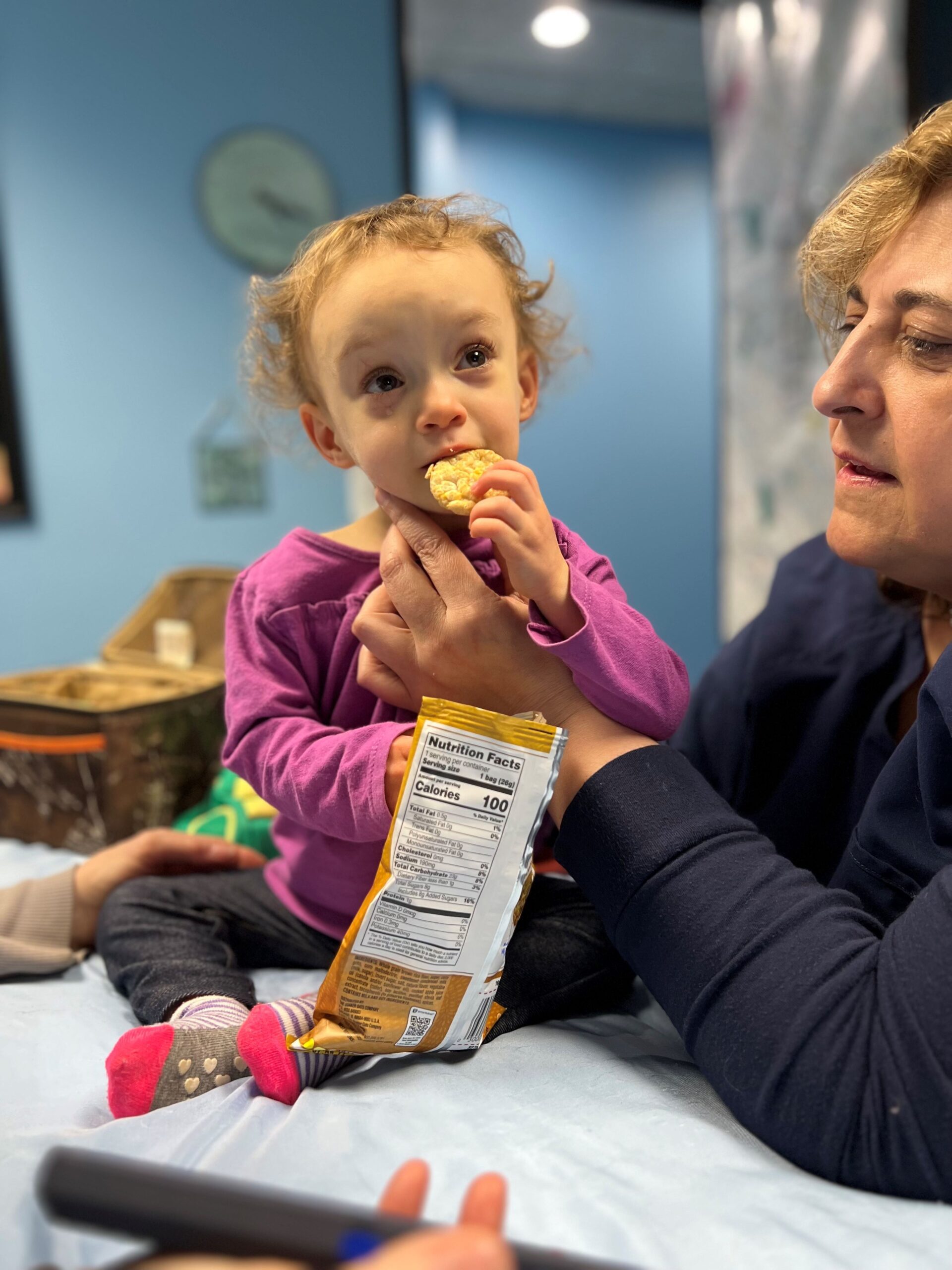Picky eating is a common concern among parents, impacting children’s nutrition, growth, and overall well-being. From rejecting certain foods to limited dietary variety, picky eating can be frustrating and concerning for families. Occupational therapists (OTs), such as ours at Michigan Pediatric Therapy, specialize in addressing feeding challenges, offering valuable insights and interventions to help children expand their food repertoire and develop healthier eating habits. Let’s explore the causes and contributing factors of picky eating, and how feeding therapy from an occupational therapy perspective can effectively support children and families in Michigan.
Causes of Picky Eating
Picky eating is typically not caused by a single factor but rather a combination of physiological, psychological, and environmental influences. Some common causes include:
- Sensory Sensitivities: Children may be sensitive to certain textures, tastes, smells, or even the appearance of food. This can lead to food aversions and selective eating habits.
- Oral-Motor Challenges: Difficulties in oral-motor skills, such as chewing and swallowing, can make certain foods challenging or uncomfortable to eat.
- Genetic Factors: Research suggests that genetics may play a role in picky eating tendencies, as children may inherit certain taste preferences or sensory sensitivities from their parents.
- Developmental Stage: Picky eating is often more prevalent during certain developmental stages, such as toddlerhood or early childhood, when children assert independence and preferences.
- Environmental Factors: Family meal dynamics, mealtime routines, and food availability at home can influence a child’s eating habits and food choices.
- Emotional Factors: Stress, anxiety, or negative associations with food (e.g., past unpleasant experiences) can contribute to picky eating behaviors.s.

Contributing Factors to Picky Eating
In addition to the underlying causes, several contributing factors can exacerbate picky eating behaviors:
- Limited Food Exposure: Children who are not exposed to a wide variety of foods from an early age may develop limited acceptance of new foods.
- Parental Feeding Practices: Overly restrictive feeding practices or pressure to eat can backfire, leading to increased resistance and picky eating behaviors.
- Food Neophobia: Fear of trying new foods, known as food neophobia, is common among young children and can contribute to picky eating.
- Mealtime Environment: Chaotic or stressful mealtime environments can affect a child’s appetite and willingness to try new foods.
- Texture Preferences: Some children have strong preferences for certain textures (e.g., crunchy foods) and avoid others (e.g., soft or mushy foods).
- Medical or Developmental Conditions: Conditions such as autism spectrum disorder, sensory processing disorder, or gastrointestinal issues can contribute to picky eating behaviors.
How Feeding Therapy Can Help
Feeding therapy from an occupational therapy perspective focuses on addressing the underlying causes and contributing factors of picky eating. OTs employ evidence-based interventions to promote positive feeding experiences and support healthy eating habits. Here’s how feeding therapy can help:
Comprehensive Assessment
Occupational therapists conduct thorough assessments to understand the specific challenges contributing to picky eating. This may include evaluating:
- Sensory Processing: Assessing how the child responds to different textures, tastes, smells, and visual aspects of food.
- Oral-Motor Skills: Evaluating chewing, swallowing, and other oral-motor functions to identify any deficits or difficulties.
- Feeding Behaviors: Observing mealtime behaviors, food preferences, and interactions with caregivers during meals.

Individualized Treatment Plans
Based on the assessment findings, OTs develop personalized treatment plans tailored to the child’s unique needs and preferences. Treatment goals may include:
- Food Exploration: Introducing new foods gradually, using systematic desensitization techniques to increase acceptance.
- Texture and Taste Exposure: Encouraging exposure to a variety of textures and tastes through play-based activities and sensory exploration.
- Oral-Motor Exercises: Providing exercises to strengthen oral-motor skills and improve chewing and swallowing abilities.
- Mealtime Strategies: Teaching parents and caregivers effective mealtime strategies to create a positive and supportive eating environment.


Sensory Integration Techniques
OTs utilize sensory integration techniques to help children overcome sensory sensitivities and aversions to specific food properties. This may involve:
- Sensory Play: Engaging children in sensory play activities to desensitize them to different food textures, smells, and tastes.
- Gradual Exposure: Introducing new foods in a non-threatening way, allowing children to explore and interact with food at their own pace.
- Environmental Modifications: Recommending modifications to the mealtime environment to reduce sensory overload and anxiety.
Behavioral and Cognitive Strategies
Feeding therapy also incorporates behavioral and cognitive strategies to address negative associations with food and promote positive mealtime behaviors:
- Positive Reinforcement: Using praise and rewards to encourage trying new foods and expanding food choices.
- Mealtime Routines: Establishing consistent mealtime routines and rituals to create predictability and reduce mealtime anxiety.
- Education and Support: Providing education to parents and caregivers about typical feeding development, nutrition, and strategies for managing picky eating at home.
Collaboration and Support

Case Studies: Success Stories in Feeding Therapy
Case Study 1: Overcoming Sensory Sensitivities
Case Study 2: Improving Oral-Motor Skills
Practical Tips for Parents
1. Create a Positive Mealtime Environment
- Establish a calm and supportive atmosphere during meals, free from distractions and stress.
2. Offer Variety and Choices
- Introduce new foods alongside familiar favorites, allowing children to explore and make choices at their own pace.
3. Role Model Healthy Eating
- Demonstrate healthy eating behaviors and positive attitudes toward food to encourage children to follow suit.
4. Avoid Power Struggles
- Minimize pressure and coercion during mealtime, focusing on creating enjoyable and relaxed dining experiences.
5. Seek Professional Support
- Don’t hesitate to seek help from an occupational therapist or feeding specialist if picky eating persists or causes significant stress.
Conclusion
Picky eating is a complex issue influenced by various factors, but with the right support and interventions, children can expand their food preferences and develop healthier eating habits. Feeding therapy from an occupational therapy perspective offers valuable tools and strategies to address picky eating challenges effectively. By understanding the underlying causes, utilizing evidence-based interventions, and fostering a positive mealtime environment, OTs empower families to navigate feeding difficulties with confidence and achieve positive outcomes. If you’re concerned about your child’s picky eating habits, reach out to us at Michigan Pediatric Therapy to set up a consultation with one of our licensed occupational therapists for personalized support and guidance on promoting healthy eating habits and overall well-being. Together, we can help children thrive and enjoy a balanced approach to nutrition and mealtime.
Serving families in Farmington Hills, MI, and surrounding cities.
Give us a call to schedule an appointment to start your child’s journey to positive feeding experiences today!
📞 (248) 939-4030
🌐 mipediatrictherapy.com





